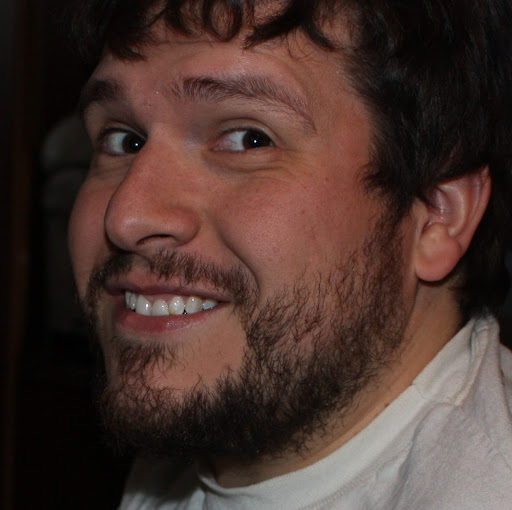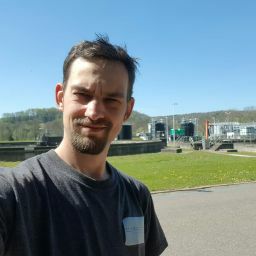Mark A Simons
age ~69
from Bellflower, CA
- Also known as:
-
- Mark Alan Simons
- Mark Lucente
- Mark A Simmons
- Marka Simons
- Maria E Valencia
- Marie Valencia
- Phone and address:
-
9237 Laurel St, Bellflower, CA 90706
5628673913
Mark Simons Phones & Addresses
- 9237 Laurel St, Bellflower, CA 90706 • 5628673913
- Coronado, CA
- Los Angeles, CA
- Norwalk, CA
- Downey, CA
- Harleysville, PA
- Fontana, CA
- 9237 Laurel St, Bellflower, CA 90706
Work
-
Company:Activision/blizzard - El Segundo, CA2008
-
Position:Acting floor lead
Education
-
School / High School:Kent State University- Kent, OH2001
-
Specialities:Bachelor of Science in Technology
Specialities
Labor, Employment & Benefits • Employee Benefits • Retirement Plan Design & Administration
Lawyers & Attorneys

Mark Simons - Lawyer
view sourceOffice:
Morgan, Lewis & Bockius LLP
Specialties:
Labor, Employment & Benefits
Employee Benefits
Retirement Plan Design & Administration
Employee Benefits
Retirement Plan Design & Administration
ISLN:
918634274
Admitted:
2005
University:
Brigham Young University, B.A., 1997
Law School:
Rutgers University School of Law, Newark, J.D., 2003
Us Patents
-
Damage Proxy Map From Interferometric Synthetic Aperture Radar Coherence
view source -
US Patent:20120319893, Dec 20, 2012
-
Filed:Jun 20, 2012
-
Appl. No.:13/528610
-
Inventors:Sang-Ho Yun - La Canada Flintridge CA, US
Eric Jameson Fielding - Pasadena CA, US
Frank H. Webb - Pacific Palisades CA, US
Mark Simons - Altadena CA, US -
Assignee:California Institute of Technology - Pasadena CA
-
International Classification:G01S 13/90
-
US Classification:342 25 C
-
Abstract:A method, apparatus, and article of manufacture provide the ability to generate a damage proxy map. A master coherence map and a slave coherence map, for an area prior and subsequent to (including) a damage event are obtained. The slave coherence map is registered to the master coherence map. Pixel values of the slave coherence map are modified using histogram matching to provide a first histogram of the master coherence map that exactly matches a second histogram of the slave coherence map. A coherence difference between the slave coherence map and the master coherence map is computed to produce a damage proxy map. The damage proxy map is displayed with the coherence difference displayed in a visually distinguishable manner.
-
Systems And Methods For Advanced Rapid Imaging And Analysis For Earthquakes
view source -
US Patent:20160047940, Feb 18, 2016
-
Filed:Aug 17, 2015
-
Appl. No.:14/828348
-
Inventors:- Pasadena CA, US
Angelyn W. Moore - Sierra Madre CA, US
Zhen Liu - Pasadena CA, US
Sang Ho Yun - La Canada Flintridge CA, US
Hook Kian Hua - Los Angeles CA, US
Gian Franco Sacco - Pasadena CA, US
Timothy M. Stough - Pasadena CA, US
Costin Redulescu - Woodland Hills CA, US
Eric J. Fielding - Pasadena CA, US
Paul A. Rosen - La Canada Flintridge CA, US
Frank H. Webb - Pacific Palisades CA, US
Jennifer W. Cruz - Walnut CA, US
Mark Simons - Altadena CA, US
Piyush Shanker Agram - Pasadena CA, US
Paul Randall Lundgren - La Canada Flintridge CA, US
Gerald John Maramba Manipon - Carson CA, US
Michael David Starch - Arcadia CA, US
Brian Wilson - Pasadena CA, US -
International Classification:G01V 11/00
-
Abstract:Many embodiments provide a hybrid data processing system (HySDS) of an end-to-end geodetic imaging data system enabling near-real-time science, assessment, response, and rapid recovery. The HySDS may be an operation data processing system that integrates data from many different geodetic data sources and/or sensors, including interferometric synthetic aperture radar (InSAR), GPS, pixel tracking, seismology, and/or modeling, and processes the data to generate actionable high quality science data products. The HySDS may provide for an automated imaging and analysis capabilities that is able to handle the imminent increases in raw data from new and existing geodetic monitoring sensor systems.
Resumes

Mark Simons Massillon, OH
view sourceWork:
Activision/Blizzard
El Segundo, CA
2008 to 2013
Acting Floor Lead Activision/Blizzard
El Segundo, CA
2008 to 2013
Systems Engineer in Test Infocision Management Corporation
Akron, OH
2006 to 2008
Quality Analyst
El Segundo, CA
2008 to 2013
Acting Floor Lead Activision/Blizzard
El Segundo, CA
2008 to 2013
Systems Engineer in Test Infocision Management Corporation
Akron, OH
2006 to 2008
Quality Analyst
Education:
Kent State University
Kent, OH
2001 to 2005
Bachelor of Science in Technology Kent State University
Kent, OH
2001 to 2005
Associate Degree in Applied Business
Kent, OH
2001 to 2005
Bachelor of Science in Technology Kent State University
Kent, OH
2001 to 2005
Associate Degree in Applied Business
Medicine Doctors

Mark E. Simons
view sourceSpecialties:
Chiropractor
Work:
Sante Community PhysiciansKerman Chiropractic Center
207 S Madera Ave, Kerman, CA 93630
5598469406 (phone), 5598465580 (fax)
207 S Madera Ave, Kerman, CA 93630
5598469406 (phone), 5598465580 (fax)
Languages:
English
Description:
Dr. Simons works in Kerman, CA and specializes in Chiropractor.
Isbn (Books And Publications)



News

"There's room for a richer definition": Astronomers on rethinking what makes a planet habitable
view source- Dr. Mark Simons, a professor of geophysics at the Seismological Laboratory at California Institute of Technology and co-author of the paper, told Salon its a hard question to answer because right now, astronomers make the measurements they can with the technology thats available to them. When it c
- Date: Jan 11, 2024
- Category: Science
- Source: Google

Chile proves quake readiness
view source- now when its going to occur. But the key point here is that this magnitude-8.2 is not the large earthquake that we were expecting for this area. Were actually still expecting potentially an even larger earthquake, said Mark Simons, a geophysicist at the California Institute of Technology.
- Date: Apr 02, 2014
- Source: Google

Chile earthquake death toll rises to 6
view source- The country sits on an arc of volcanoes and fault lines circling the Pacific Ocean known as the "Ring of Fire," according to Mark Simons, a geophysicist at Caltech in Pasadena, California. This area sees frequent earthquakes and volcanic eruptions. Since 1973, Chile has had more than a dozen quakes
- Date: Apr 02, 2014
- Category: World
- Source: Google

Chile Quake: This was big but a bigger one awaits, scientist says
view source- "This magnitude 8.2 is not the large earthquake that we were expecting in this area," said Mark Simons, a geophysicist at Caltech in Pasadena, California. "We're expecting a potentially even larger earthquake."
- Date: Apr 02, 2014
- Category: World
- Source: Google

Chile's M8.2 quake causes little damage, death
view source- do not know when it's going to occur. But the key point here is that this magnitude-8.2 is not the large earthquake that we were expecting for this area. We're actually still expecting potentially an even larger earthquake," said Mark Simons, a geophysicist at the California Institute of Technology.
- Date: Apr 02, 2014
- Source: Google

Japan's quake still poses puzzles
view source- "It is important to note that we are not predicting an earthquake here," Caltech's Mark Simons, the study's lead author, said in a news release about the research. "However, we do not have data on the area, and therefore should focus attention there, given its proximity to Tokyo."
- Date: Mar 10, 2012
- Category: World
- Source: Google

Zombies are coming, a doctor at CDC says
view source- Before the 9-magnitude quake, the buildup of tension along a fault had suggested a smaller tremor, scientists led by Mark Simons, a geophysicist at the California Institute of Technology in Pasadena, wrote Thursday in the online journal Science.
- Date: May 22, 2011
- Category: Health
- Source: Google

Detail gives clue to shaky future
view source- California Institute of Technology geophysicist Mark Simons said knowing how much the land had shifted during the quake and its aftershocks would help scientists understand future hazards in the region and allow them to plan accordingly.
- Date: Mar 13, 2011
- Category: World
- Source: Google

Mark Simons
view source
Mark Simons
view source
Mark Simons
view source
Mark Simons
view source
Mark Simons
view source
Mark Simons
view source
Mark Simons
view source
Mark Simons
view sourceYoutube
Plaxo

Mark Simons
view sourceCentral, Hong Kong
Classmates

Mark Simons
view sourceSchools:
Radford High School Honolulu HI 1975-1979
Community:
Evan Tate, Nancy Williams

Mark Simons
view sourceSchools:
Newaygo High School Newaygo MI 1978-1982
Community:
Kimberly Holmes, Martin Verschoor, Don Bacon

Mark Simons
view sourceSchools:
Hanna Elk - Mountain High School Hanna WY 1975-1979
Community:
Kathy Garcia, Patsy Pat, Ted Garcia, Ryan Campbell

Mark Simons
view sourceSchools:
Eau Claire High School Columbia SC 1991-1995

Mark Simons
view sourceSchools:
Waukesha North High School Waukesha WI 1973-1977

Mark Simons
view sourceSchools:
Roosevelt High School Roosevelt NY 2003-2007
Community:
Hillary Garcia, Lorein Truitt

Mark Simons
view sourceSchools:
Versailles High School Versailles OH 1976-1980
Community:
Lisa Holloway, Adolfo Wittouck

Mark Simons
view sourceSchools:
Southview High School Lorain OH 1987-1991
Community:
Johnnie Gonzalez, Craig Funni
Myspace

Mark Simons
view sourceFlickr
Googleplus

Mark Simons
Work:
California Institute of Technology - Professor
Education:
Santa Barbara High School
Bragging Rights:
I feel more like I do now than I did yesterday

Mark Simons
Education:
Ohio University - MBA

Mark Simons

Mark Simons

Mark Simons

Mark Simons
Tagline:
I mkae things

Mark Simons

Mark Simons
Get Report for Mark A Simons from Bellflower, CA, age ~69















